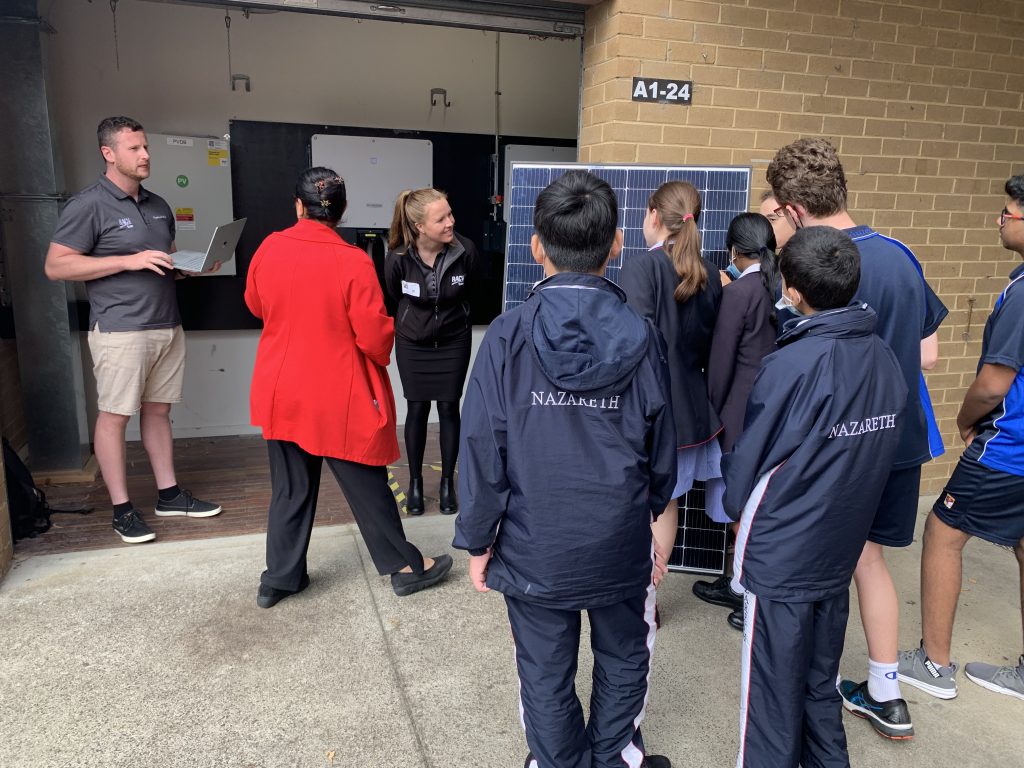How does a college reduce its emissions?
The students, staff at Nazareth College and the Noble Park community are about to find out.




Students in Year 7 & 8 are being invited to play an important role in their school that is quite literally a legacy project. First comes understanding what it means to decarbonize your operations in your school and at home. Then comes the action which is clearly being supported by the College.
Real Time Learning’s undergraduate engineers work alongside students, staff and industry mentors to build capacity through STEM. RTL staff will work with RACV Solar staff who have just installed 300 plus solar panels on the Wheeler Auditorium in January.

On Wednesday students were able to see how data analytics can best inform the College how it can best use energy it can now generate. Students with the support of RTL’s undergraduate engineers will be invited to build out a roadmap to further reduce emissions with Pat Tale and his team from RACV Solar. This will include looking at other factors contributing to the College’s net emissions.



Here students learn of the role drones can play. Jacob Fevreau, an electrician, also training to be an electrical engineer, on the RACV Solar Team shows students how the drone can help construct a digital twin of the school that will simulate energy that can be generated in the future.

RACV Solar and RTL look forward to working with students at Nazareth College passionate about climate change and using renewable energy.
Australia is seeing widespread adoption of roof top solar. RACV Solar and RTL will now work with staff and students on how we might redistribute, and store excessive power generated. This could include installation of a community battery. All will be determined in the coming months. Staff and students will play an important role in making informed decisions with the help of staff from RACV Solar and related industries.
RACV Solar and Real Time Learning would love to hear from other schools that wish to explore how they can make a difference, reducing emissions and saving money at the same time. We believe this is a great example of a legacy project for students to engage in and to see how technology can be used to contribute to a more sustainable future.

